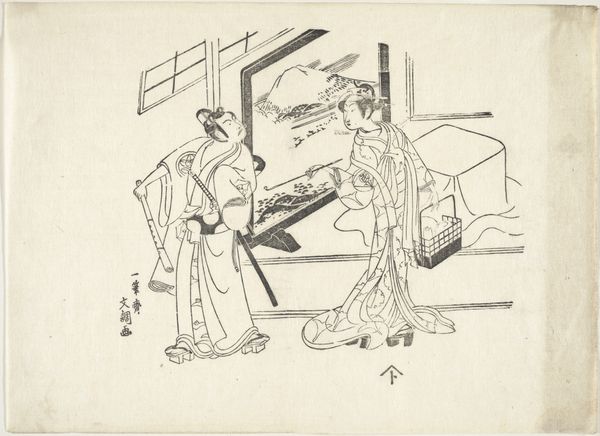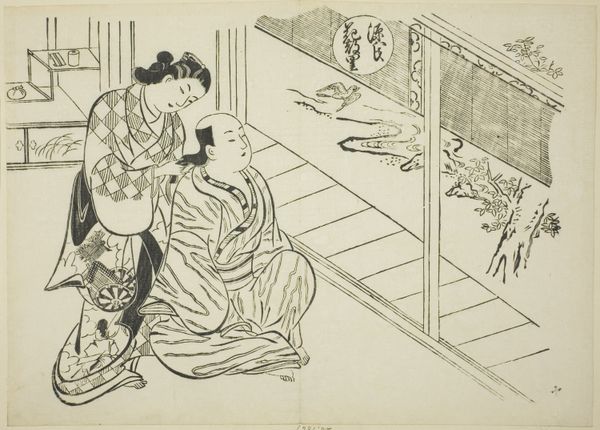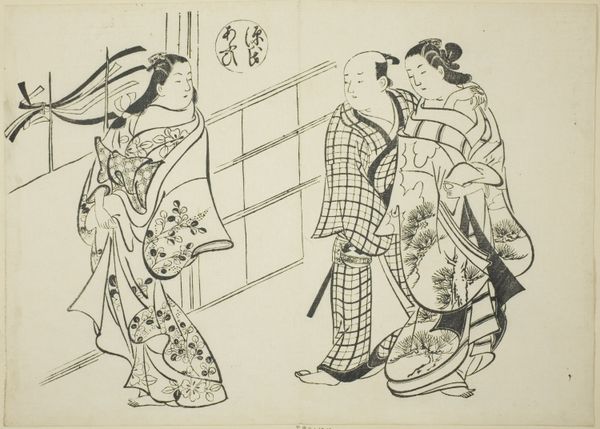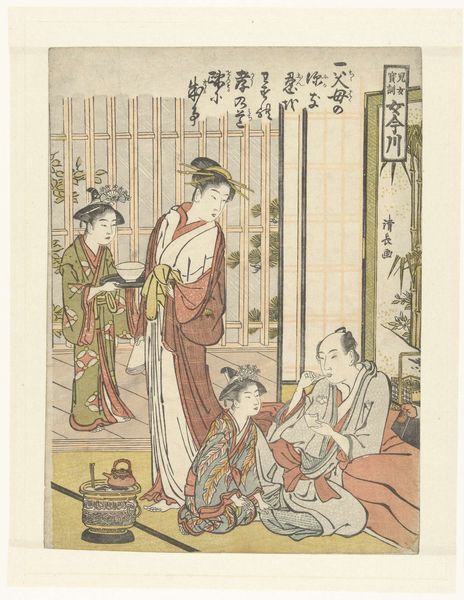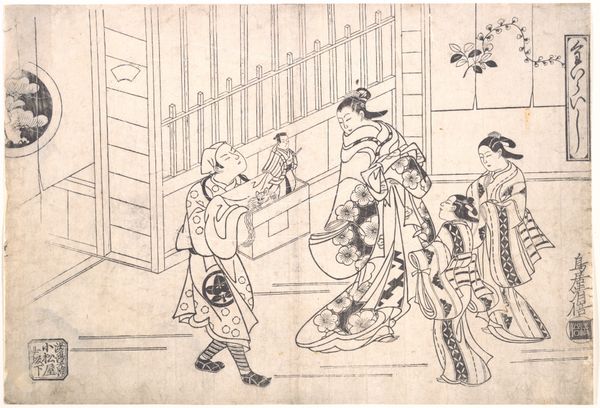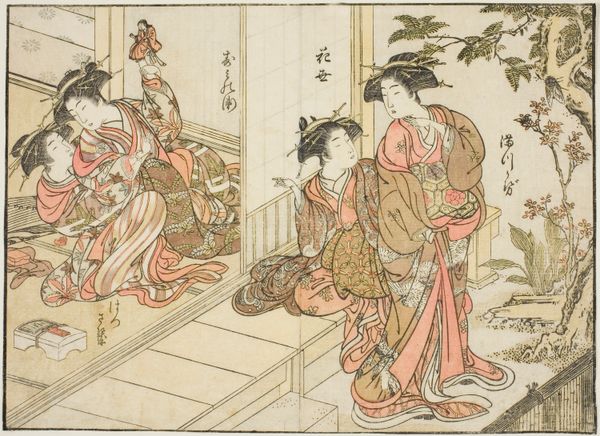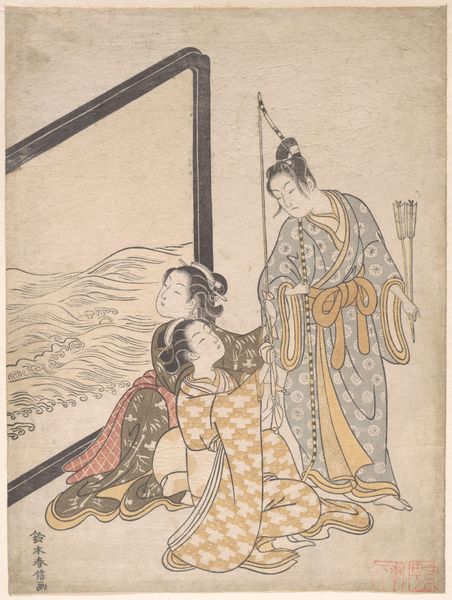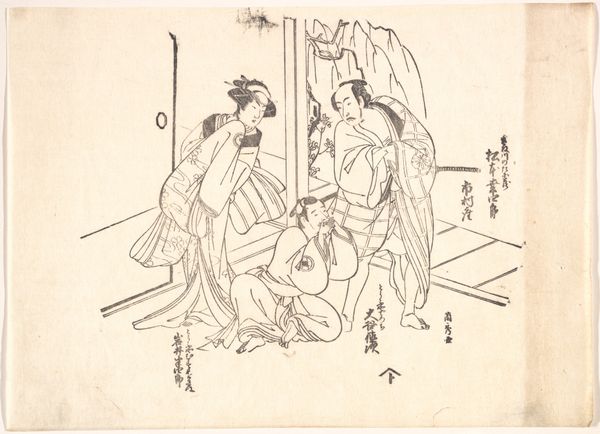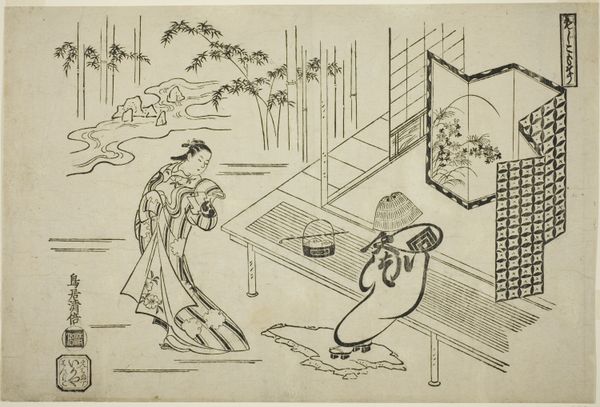
drawing, print, ink, woodcut
#
drawing
# print
#
human-figures
#
asian-art
#
ukiyo-e
#
figuration
#
ink
#
woodcut
Dimensions: H. 9 3/4 in. (24.8 cm); W. 13 1/2 in. (34.3 cm)
Copyright: Public Domain
Curator: This artwork is called “The Actors,” made sometime between 1723 and 1792 by Ippitsusai Bunchō. It’s a Japanese woodcut print in ink, and you can find it on display here at the Metropolitan Museum of Art. Editor: My first impression? Elegant melancholy. Look at those delicate lines depicting the actors' robes and hairstyles—so much refinement. But something about the black-and-white medium gives it a sense of bygone beauty. A faded dream of the stage. Curator: Absolutely. Ukiyo-e prints, like this one, often capture fleeting moments. These actors, most likely portraying characters from Kabuki theater, are frozen in time, removed from the vibrant, bustling stage. The medium, a woodblock print, would have allowed for the mass production of these images. Editor: So, like celebrity posters of the era? Only much, much more stylish, I imagine. The butterfly and floral motifs on their robes, the meticulous detail in the bamboo screen—they whisper stories of beauty and performance, don't they? Are there social undertones here, as Kabuki was at some times the people's theater? Curator: That’s an interesting point. Kabuki occupied a complex space in Edo society. Popular, yes, but also viewed with some suspicion by the ruling elite because it provided the place where other values beyond those permitted by the social hierarchy could be given attention. Depictions of actors, such as these, reflect this complex dance between popular culture and social control, mirroring anxieties and desires of the urban populace. These actors were celebrities, but in a world of shifting political forces. Editor: So, it's more than just pretty pictures. This image invites you to think about those figures on so many levels; to see behind the costume; see beyond what they were presenting for audiences in their day and imagine their relationship to the political structure in general. Even the bamboo motif whispers a symbolic narrative, doesn’t it? Curator: Indeed. In East Asian art, bamboo represents resilience, flexibility, and strength—qualities that might reflect an actor's adaptability. These prints enabled a wider audience to participate in Kabuki's social dialogues. Editor: Well, now when I look at it, I feel that quiet complexity. This print really encapsulates how something beautiful and seemingly straightforward can actually hold so much history, thought, and, let's face it, fabulous artistry. Curator: Exactly. Bunchō managed to embed socio-political context within the seemingly simple aesthetic choices, demonstrating how art and societal power structures often influence and mirror each other.
Comments
No comments
Be the first to comment and join the conversation on the ultimate creative platform.
